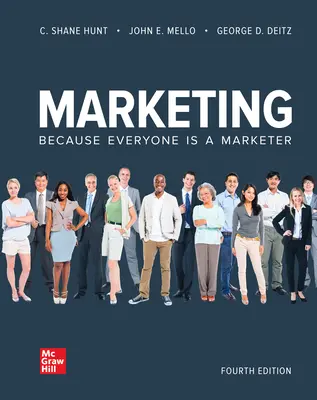Posted by admin on Feb 7, 2017
Today’s fast-food consumers trend toward better burgers with fresher beef and a wider variety of toppings. Last year an internal company memo revealed that only 20 percent of millennials had even tried a Big Mac. In an attempt to respond to changing consumer behavior, the company unveiled two new-look Big Macs, the limited-edition Mac Jr. and Grand Mac, to accompany the original. All three versions hold to the traditional frozen patties and classic sauce. The difference is size: The Mac Jr. lacks its middle bun, has only one patty, and has fewer calories (460) than a turkey sandwich from Panera Bread; the Grand Mac, an 860-calorie monstrosity about 1 ½ times as big as the 540-calorie original, will likely serve as more of a novelty item for the extremely hungry. Unlike other chains, such as Taco Bell, whose Doritos Locos Taco did $1 billion in 2012, its first year, McDonald’s has struggled to draw crowds with its creations. Burgers account for almost 20 percent of the restaurant chain’s sales, but it’s been decades since there was any groundbreaking innovation. In 2013 the company pulled its Angus burger off the menu. Consumers weren’t willing to buy it for $5 when they could get a standard burger off the Dollar Menu instead. It is likely going to be difficult for McDonald’s to win over younger customers by changing something they haven’t been interested in trying. Millennials prefer seemingly healthier burgers, the kind made at chains such as In-N-Out and Shake Shack. McDonald’s is experimenting with fresh meat; last year it removed artificial preservatives and additives from breakfast items and chicken nuggets, but that’s not enough to ensure it’ll continue to have billions and billions to serve. Discussion Questions Do you think that offering the Big Mac in different sizes will appeal to customers who are not currently buying them? Explain your answer. How would you position the Big Mac to a customer in 2017 that has so many other burger options? Source: Claire Suddath. “McDonalds Wants to Woo You with Two New Big Macs” January 18, 2017. Bloomberg....
Read More
Posted by admin on Dec 19, 2016
Facebook is using streaming TV to test an ad model that feels a little bit old school. Recently, it’s been targeting ads to people streaming certain shows on their Roku or Apple TV set-top boxes. It customizes commercials based on the Facebook profiles tied to the IP addresses doing the streaming, according to a company spokesman. Facebook is trying out this approach with the A&E network (The Killing, Duck Dynasty) and streaming startup Tubi TV, selecting free test ads for nonprofits or its own products along with a handful of name brands. This push is part of a broader effort by social media companies to build their revenue with ads on video. Twitter is placing much of its ad-sales hopes on streaming partnerships with sports leagues and other content providers. In October, CFO Anthony Noto told analysts on an earnings call that the ads played during Twitter’s NFL Thursday Night Football streaming exclusives had been especially successful, with many people watching them in their entirety with the sound turned on. As for its streaming-ad targeting, Facebook has a lot of questions to answer, including how best to track the ads’ effectiveness. For now the company’s priority remains finding ways to help advertisers adapt their strategies for use on its primary site. Do you think this in an effective way for advertisers to reach their target market? Identify an ad that you have seen on a streaming service you watch and explain why you think that ad appeared? Source: Vauhini Vara. “Facebook Knows What You’re Streaming”. December 1, 2016. Bloomberg....
Read More
Posted by admin on Feb 18, 2016
By effectively expanding into the digital world, brands can foster closer relationships with their followers. They also can add extra credibility to marketing at a time when consumers are increasingly turned off by traditional advertising. Where once a brand could use its marketing campaigns to present a consistent message, the meteoric rise of social media has forced companies, especially luxury brands, to reassess how they use, interact and respond to the likes of Instagram and Snapchat. That includes finding new ways to engage with those brand followers, either through regular digital interactions on popular social media sites or offering online extras, like behind-the-scene looks at fashion shows or photo shoots, to reinforce their ties to a designer or fashion house. Brands also have turned to social media to extend their presence beyond the traditional customer base, partly to reach a new generation of consumers that have grown up online. Some luxury brands have embraced social media and other digital activities with greater energy than others. Some digitally savvy brands like Burberry have incorporated social media and other online platforms directly into their wider marketing campaigns. These activities, have given companies a greater reach in the online world, associating Burberry’s regular posts on the likes of YouTube and Snapchat with people’s increasing desire to be connected to the next online trend. Marketing experts say that how a company is viewed online — not just by its primary customers, but also by the wider online population — can have a significant impact on a brand’s overall reputation, particularly with digitally literate young shoppers. This change has been particularly acute for luxury brands such as Louis Vuitton and Chanel. These companies have traditionally fostered an image of exclusivity as part of their marketing strategies, portraying a lifestyle that is often out of reach for most people. In response to the digital free-for-all that is synonymous with the Internet, analysts say many companies have had to expand their brands’ online footprint, often teaming up with social media darlings and other celebrities to present a more populist image. That includes Dior, which joined forces with the music star Rihanna, whose social media following is four times as large as that of the fashion label. Calvin Klein signed a deal with Justin Bieber, in part to tap into the Canadian singer’s avid following on Instagram and Twitter, where his audience is up to 15...
Read More
Posted by admin on Nov 16, 2015
The role of social media in marketing entered a new phase in 2015 when Domino’s began allowing customers to order pizza using Twitter. The company became the first major restaurant chain to use Twitter as an ongoing way for customers to place and complete an order. Domino’s customers were able to order a pizza by simply tweeting the pizza emoji to @Dominos. The move was part of Domino’s marketing strategy for attracting young, busy consumers who are active across social media platforms. Domino’s marketers received a flurry of free media following the announcement and developed a unique competitive advantage for their products using social media. For Twitter, it’s an evolution that the online social network is trying to make from a place to chat about or even advertise stuff to a place where folks can buy stuff. Several familiar retailers, including Old Navy and AMC Theaters, have tested selling items on Twitter via “buy now” buttons on tweets. Source: Bruce Horovitz, “Domino’s to roll out Tweet-a-Pizza,” USA Today, May 14, 2015, http://www.usatoday.com/story/money/2015/05/12/dominos-pizza-tweet-a-pizza-twitter-tweet-to-order-fast-food-restaurants/27175005/ Discussion Questions: 1.Do you think this will be an effective marketing strategy for Domino’s over the next year? 2.Can you think of another product that should develop a similar feature in Twitter that would be popular with their...
Read More
Posted by admin on Oct 14, 2015
Burger King marketers face a significant challenge. McDonald’s remains the world’s largest restaurant company, and its sheer size has pushed Burger King to take marketing risks to stay competitive. In 2014, McDonald’s had roughly five times Burger King’s ad budget, with money for Super Bowl ads and sponsorships of the FIFA World Cup and the U.S. Olympic team. However, the budget size advantage doesn’t go as far as it used to because of social media. If marketers can utilize social media as part of their marketing plan, it can generate more buzz than paid media. Burger King likes being edgy and it has proved that it doesn’t mind doing things that might make other brands blush. In 2015, as the company pushed a new spicy version of its chicken fries it tweeted a picture of what appeared to be a stack of adult magazines. The magazines, their cover images blurred, were set next to a box of Fiery Chicken Fries, and the tweet read: “Hotter than your summer reading list. #fierychickenfries.” Less than a week later, a similar tweet featured blurred-out images of bikini-clad women with this message: “Hotter than your browsing history.” In an age when office chatter has moved from last night’s TV episode to the latest viral video, part of Burger King’s marketing advantage has been its willingness to move quickly to exploit a constantly churning Internet news cycle. After the company reentered France in 2013, following a 16-year absence, social media there were besieged with negative comments from French customers complaining about long lines at the restaurants. Burger King didn’t waver in the face of the apparent customer service crisis. Instead, it printed some of the “angry tweets” on construction panels at the new locations as proof it had heard the negative feedback. That gambit generated millions of retweets, won a marketing award, and again showed Burger King to be a brand that isn’t afraid to ignore conventional wisdom. In June 2014, Burger King’s chief financial officer, said the company would rely more heavily on data to make sure its marketing was cost-effective and reaching the right customers, and was “shifting channels toward more digital and social media.” The huge ad budget differential is one reason Burger King is likely to continue rolling out marketing stunts such as its open letter to McDonald’s in August 2015, asking its longtime rival to help it create a hybrid...
Read More
Posted by admin on Sep 18, 2015
This week I gave my first exam in my Principles of Marketing class. I was very pleased by the results and even more pleased by my discussions with a couple of students regarding SmartBook. SmartBook is the first and only adaptive reading experience designed to change the way students read and learn. It creates a personalized reading experience by highlighting the most impactful concepts a student needs to learn at that moment in time. For many of my students, it was their first experience with SmartBook and several commented to me how much it helped them in preparing for the exam. As a student engages with the Hunt Mello SmartBook, the reading experience continuously adapts by highlighting content based on what the student knows and doesn’t know. This ensures that the focus is on the content he or she needs to learn, making my students study experience more efficient and effective. In my Principles course with 80 students from 10 different majors, Smartbook is an amazing partner to me in reaching each of my students where they are at and helping them to develop their marketing knowledge and skills. My average exam scores are up over last year and more importantly, I think my students have a broader and deeper understanding of marketing at this point in the...
Read More





